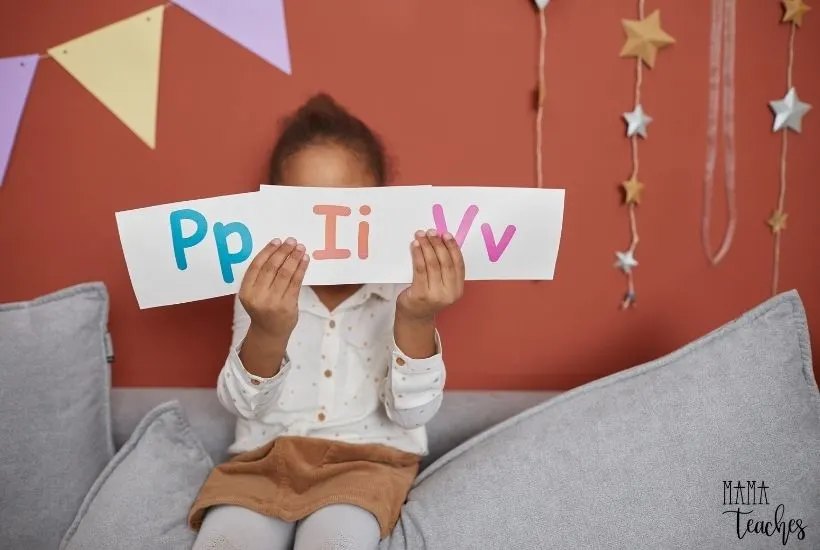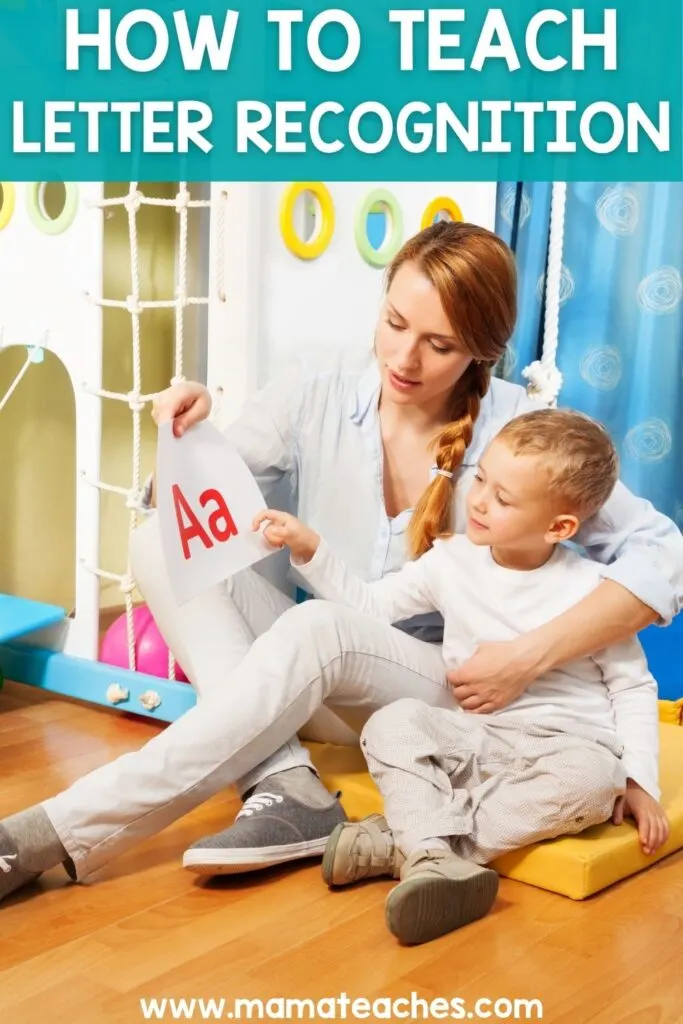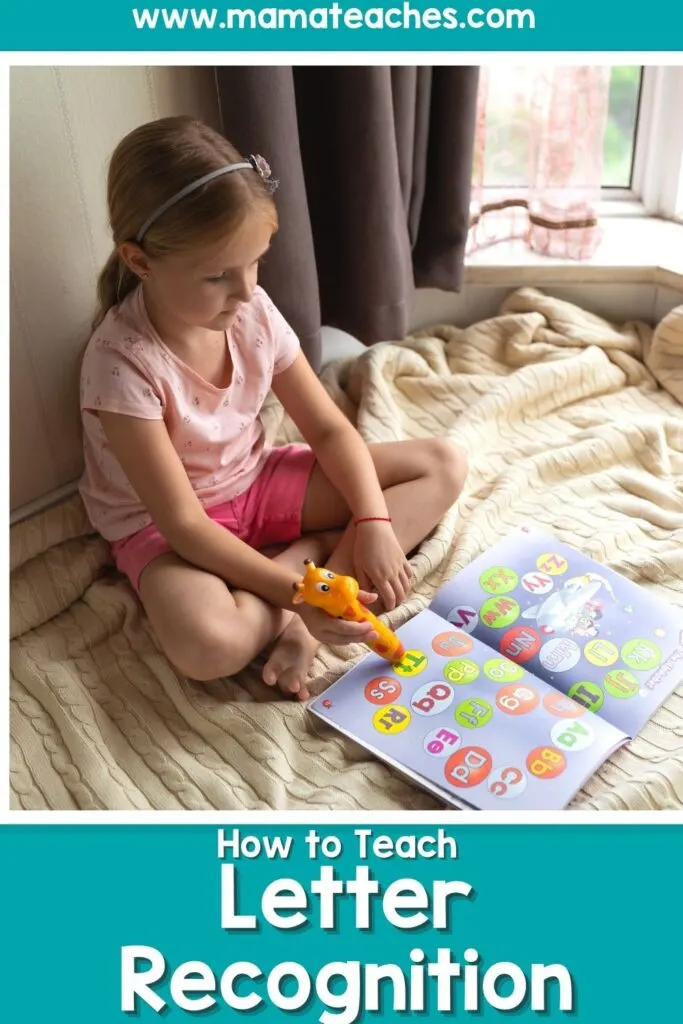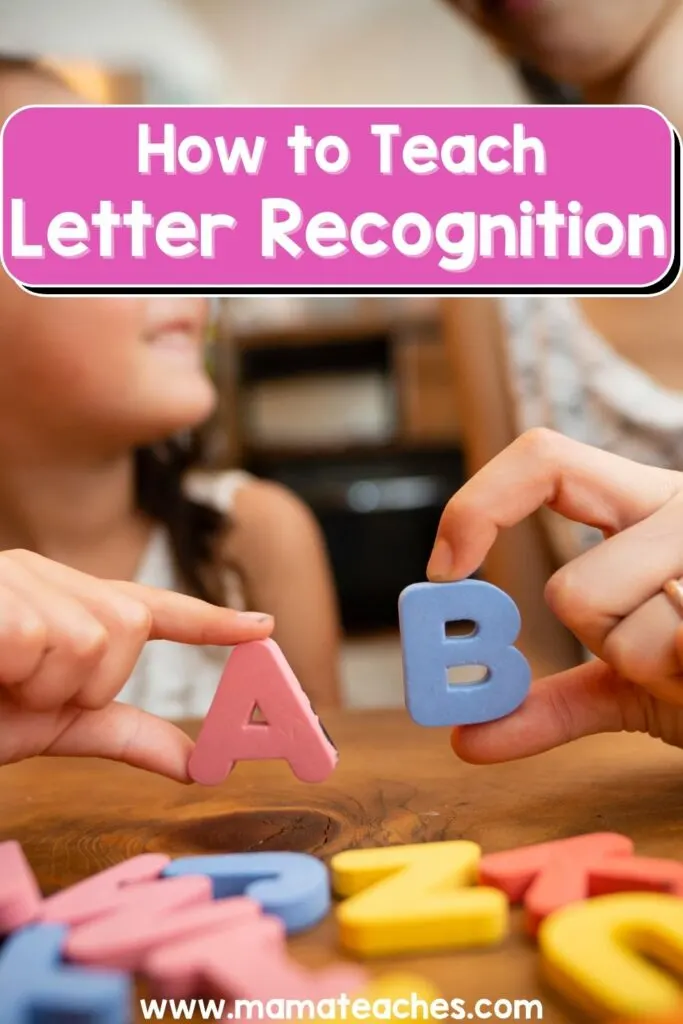Can your child recognize all the upper and lowercase letters?
Teaching this all-important pre-reading step can feel like scaling Mt. Everest.
Where do you start?
The short answer: Right here!
Teaching Letter Recognition
If you have ever wondered how to teach letter recognition, you are not alone.
Teaching the names (or sounds) of all the letters, upper and lowercase, can be daunting.
It seems like a monumental task, especially considering the attention span of young children.
The good news is that we are going to orient you for success.
You’ll know what to teach, when to teach it, and how to teach it.
It’s easier than you think.

This article contains affiliate links to things that you might like.
What Is Letter Recognition?
Letter recognition is just what the name implies; it is the ability to recognize each letter by sight, both upper and lowercase.
Some prefer to teach the names of the letters first and then the sounds; others prefer to teach the sounds first.
Whichever method you choose, the first step is teaching the child to recognize the letter.
When Do You Teach Letter Recognition?
To a young child, a letter is an object, not a symbol. Just as a child learns to say “apple” when you hold up an apple (or a picture of an apple), your child can learn to say “A” when you hold up a three-dimensional letter or a letter flashcard.
You can begin teaching letter recognition as soon as the child can speak well enough to name the objects around him.
These aren’t formal lessons, so you can begin quite young.
In the preschool years, play is practice and practice is play.
If your child puts together a puzzle of animals or construction vehicles, he can just as easily put together an alphabet puzzle.
He is learning by playing.

Letter Recognition Activities
Young children are wired to learn by exploring, so take advantage of that natural curiosity and teach letter recognition with activities.
Learning Letter Names
The best way to learn letter names is to use three-dimensional letters.
These could be wood or foam.
Another great way to make letters three-dimensional is to buy a set of alphabet cookie cutters.
Who wouldn’t love an “H” shaped grilled cheese?
You can use these cookie cutters to make–most obviously–cookies, but you can also form letters out of play dough.
Remember, play is practice!
Learning Letter Sounds
As mentioned earlier, some prefer to first teach the letter sounds instead of the letter names.
This means that when you hold up a “B,” your child would say /b/ (as in “bat”) instead of the letter name.
I am a huge fan of the LeapFrog fridge phonics set because it is interactive and reinforces letter sounds.
Alphabet Cards
At some point, you have to make the transition to two-dimensional letters because in real life letters are flat on the paper.
Here’s where alphabet cards come in.
These don’t need to be fancy.
In fact, the simpler, the better!
You can even make your own with a black marker and index cards.
Turn them into a game by hiding some “wiggly worm” cards in the pile.
When the child draws a card with the worm on it, both of you jump up and wiggle like a worm.

Alphabet Books
You already read to your child, so why not read some books that feature the letters of the alphabet?
I love the classics such as Dr. Seuss’s ABC, Chicka Chicka Boom Boom, and Eat the Alphabet.
Matching Upper and Lowercase Letters
Some letters such as “Xx” and “Oo” have upper and lowercase letters that are very similar in appearance.
Others, like “Hh” and “Aa” look quite different from one another.
When you consider that a child needs to recognize upper and lowercase letters, you realize that she must learn 52 shapes instead of 26.
She must also learn which uppercase letter goes with which lowercase one.
Practice putting these pairs together with letter matching games.
This one involves matching letters on trees.
This one is a penguin-themed letter matching game.
Finger Tracing Letters
Your child does not need to be able to write in order to learn to recognize his letters, but that doesn’t mean you can’t work on those fine motor skills at the same time.
Try finger tracing letters.
This is especially fun to do on a tray of sand (or a large Tupperware filled with dried grits).
Another way to finger trace involves you writing the letter on a small chalkboard or whiteboard, and then letting the child erase the letter with a small cube of sponge, tracing the letter as she erases.

How to Teach Letter Recognition to Kids
If you want to know how to teach letter recognition effectively, the key is to make it fun.
How do you make it fun?
Make play the practice, and keep the practice time short.
You will not teach letter recognition in a day or even a week, but if you do a little each day, your child will soon be playing “I Spy” with all the letters in the alphabet!
